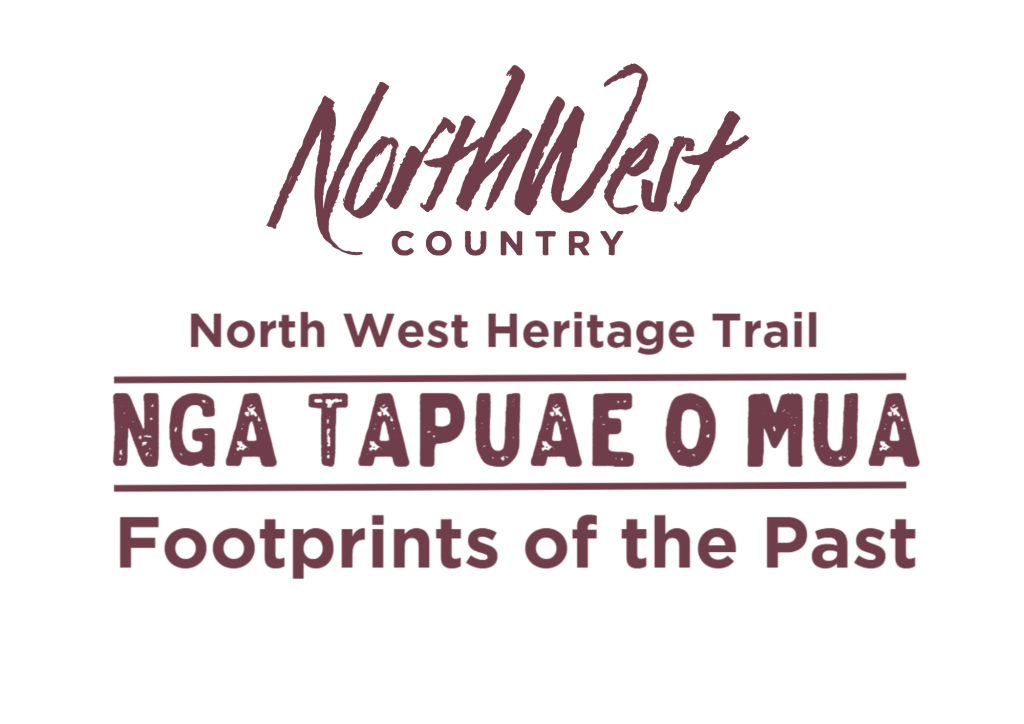
Ko Te Manatika
Nā wai mā ngā ture me ngā tīkanga o te Kōti Whenua Māori i hanga? Mō a wai? Ināianei, me pēhea ake tātou e tiaki ai i tō tātou whenua? Kei hea ngā tāngata whakahī o mua?
Justice
Aotearoa’s (New Zealand’s) first Native Land Court stands right here in Te Awaroa, Helensville. Who did the Native Lands Act benefit? Over 140 years on, we continue to wrestle with decisions made here. It replaced guardianship with ownership and dispossession. Law and lore were often confused. Right and wrong were not a part of the discussion.
Māori Justice
Māori used a justice system quite different from that which we know today.
Tapu (a spiritual restriction) was a part of that system. Tapu means that the atua (gods) protect the place, item or person which is tapu. It is off-limits. Tapu is probably best described as the overarching rule structure for Māori. It controlled how people treated each other and the environment they lived in. Breaking a tapu could result in illness or even death.
Rāhui is another type of ban. Rāhui were and still are, put on places or resources. Rāhui could be used as a method of conservation such as a seasonal ban, perhaps banning the fishing of certain kaimoana (seafood) during their spawning season; a practical outcome of a tapu restriction, for instance if a person had drowned in a fishing area; or a political restriction, often requiring permission for access. Rāhui have time limits and areas are physically marked in some way.
Kaipara was rich in resources. There are whakatauki (proverbs) relating to theft, so it wasn’t unheard of, but within a hapu (wider family group) it made little sense. Your resources were shared. If you stole from your hapu you would be called to account by your own whanau (family). Outsiders stealing from you was another story.
Restorative justice is a term we often hear today, and it was widely used for many crimes. A hui (meeting/gathering), or more correctly a whakawā (judgement), would be held bringing all parties together. It generally involved some very animated discussions ending with a muru (compensation) to be paid by the guilty party. This muru was accepted by all and no ongoing redress was expected by either party.
A great deal depended on the mana (prestige, importance) of the crime’s victim and the perpetrator and, of course, what your crime was. If a whakawā judgement wasn’t going to work, then utu (revenge) often ensued. This came in various forms from the removal of something owned through to a war. Utu would often result in an ongoing cycle of utu events, as it wasn’t like muru where the parties agreed on the correct “payment”.
The introduction of European justice systems often created hardship or the loss of freedom, both affecting a person’s ability to right a wrong and neither necessarily helped the victim.
Te Kōti Whenua Māori – The Courthouse
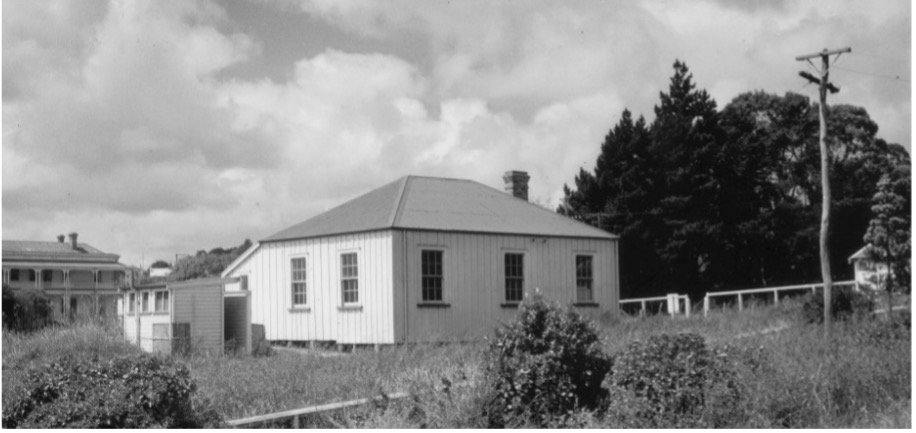
Helensville Courthouse – photo courtesy of Helensville Museum
Nau mai haere mai ki Te Kooti Whenua Māori o Te Awaroa. Welcome to Te Awaroa’s (Helensville’s) Māori Land Court. It is the first (and possibly only) courthouse built for the purpose of administering the Native Lands Act in the country[1]. As Europeans, we look at a courthouse and it symbolises justice. For Māori this courthouse played a huge part in the demise of their language and their culture, their marginalisation, disenfranchisement, and alienation from ancestral lands.
Before European arrival, land entitlement hinged heavily upon occupation. Hapu (wider family units) lived near each other for support and protection. Inter-tribal land wars were not uncommon but nor were they an everyday occurrence. The erection of structures, and the agricultural endeavours are testament to that. Te Awaroa was rich in resources, with good agricultural land, ready access to timber as required and easy access to the harbour where seafood abounded and transport throughout the Kaipara region and beyond was possible. It was a much-coveted area.
The European concept of ownership was not easily understood by Māori. How could anybody own land? – something that was there long before you were born and would be there long after you died. Māori lived communally, with rights to be somewhere. The European laws took these rights away for most.
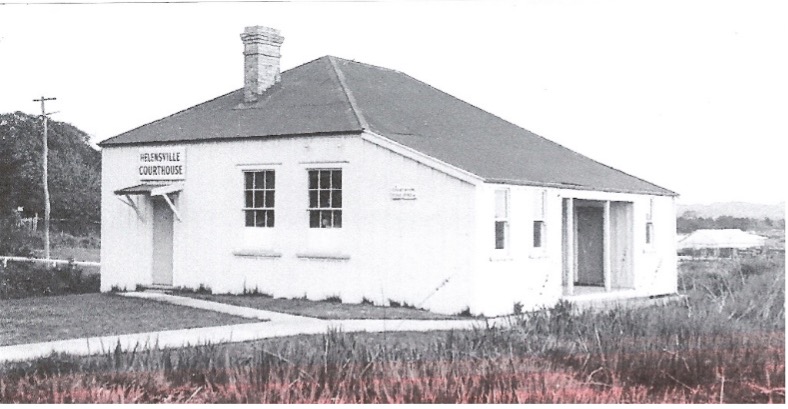
Helensville Courthouse – photo courtesy of Helensville Museum
The process of putting land into individual titles was a costly process. Often you needed to travel to the court sitting, which could be delayed without notice for an undefined period. Accommodation and food was needed for the time spent waiting for the court. Surveyor’s fees and court costs needed to be paid. This often resulted in a mortgage on the land and ultimately its sale. From the shopkeepers to the judges and lawyers hired to look after Māori rights – costs and unscrupulous dealings ate at the land and at the mana (prestige, status) of those who belonged there.
The Native Lands Act 1865 was to consolidate the laws related to Māori land, remove the old system of entitlement and put in the European system of ownership. Land that was once tūrangawaewae (a place where you belong – literally a place to put your feet) to many was now assigned to no more than 10 people – generally only one or two people. This made sales to Europeans very easy and within 15 years of the land court opening in Te Awaroa the majority of Māori land was in European hands. When querying the authorities’ promises of roads, schools, doctors, police etc, Māori were met with the request for yet more land.
For Land loss maps see: Ngāti Whātua Land Loss 1850
Whilst the courthouse was commissioned by the Native Affairs Department, it made perfect sense that the Justice system also use the facilities, so criminal cases were also heard in the courthouse. The courthouse quickly became a community asset. At various stages, as well as being the courthouse, it was:
Judge Rogan’s residence. He lived in the Judge’s Chambers which is a small room off the main courtroom.
- A police station. It seems a logical place for the police to be until they had a place of their own across the road on another part of the 10-acre block given by Māori for Education and Justice.
- A meeting place for the Town Board and other civic groups
- A medicine dispensary for Māori, although this was short-lived because Māori didn’t yet trust European medicine.
- It was even used as a ballroom in 1880 to farewell Mr Beart – the overseer for the building of the railway station buildings.
- The courthouse was last used in 1979. It was moved from its original site on Commercial Road (opposite Rimu Street) to Porter Crescent (behind the Helensville War Memorial Hall) when it was acquired by the Helensville and District Historical Society. The Society later moved to 93 Mill Road. The Courthouse was moved again.
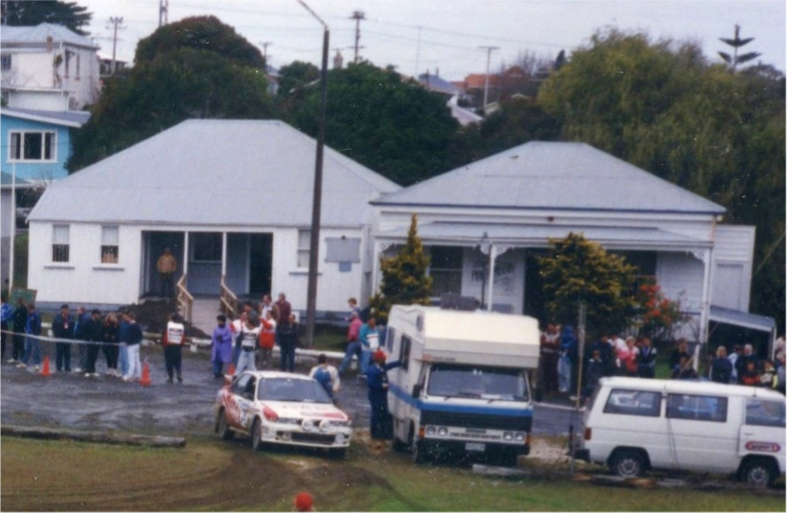
Helensville Courthouse in Porter Crescent – courtesy of Helensville Museum
The courtroom is set up as it was left by the Justice Department with the original witness stands and the original bench, which appears to have been extended at some point in time.
Further Reading from Papers Past:
They Knew Not the Bible 4-9-1877
The Helensville Bible Case 25-08-1877
Road to Helensville 19-12-1864
Property near Railway 9-9-1871 (scroll to middle)
People & Their Stories…
Francis Dart FENTON
Francis Fenton was born in 1821 in Yorkshire, England. He studied and then practiced law before coming to Aotearoa (New Zealand) to join his cousin James Armitage. He joined Maunsell at his mission station in Maraetai in 1852. He taught music to Māori scholars. When Sir George Grey paid a visit to the mission, he persuaded Fenton to resume working in law and in 1852 he was appointed to the Deeds Office in Tamaki Makaurau (Auckland). He held this position until increasing settlement in the Northern Wairoa made it necessary for the Government to appoint him as the first Resident Magistrate in the Kaipara.
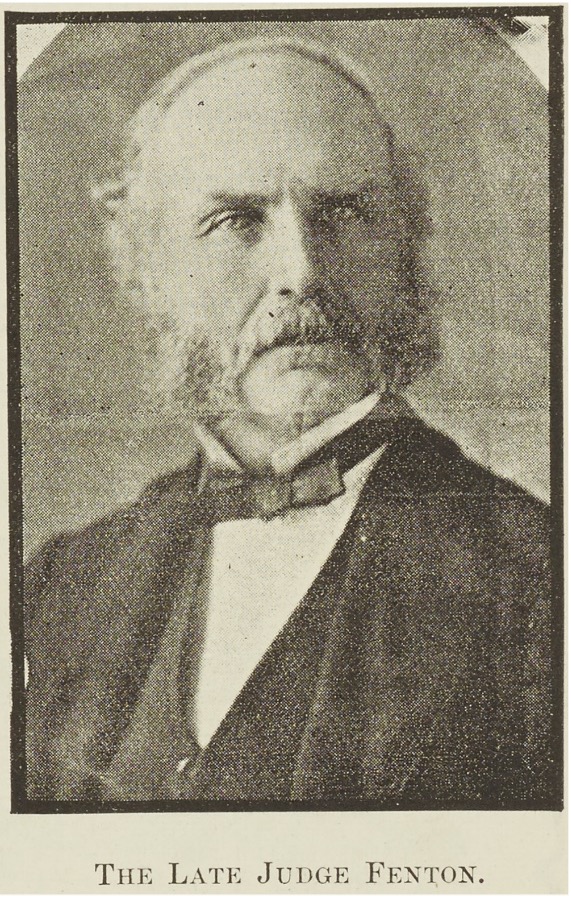
Photo courtesy of Auckland Libraries Heritage Collections NZG-18980507-575-2
Fenton didn’t reside anywhere in the vast district he served but traveled about holding sittings of the civil court wherever and whenever the need arose. He held the Resident Magistrate’s position from 1854 to 1856 and was Native Secretary in 1856. This was a short-lived position after a dispute with Donald McLean, the Government Land Purchasing Commissioner. He held various other positions until he was made Chief Judge of the Native Land Court from 1865 until he retired in 1881.
By 1856 Judge Fenton had concluded that relationships between Māori and Pākehā were at a turning point. He was impressed by the efforts of hapū (sub-tribes) to set up their own rūnanga (tribal councils) to settle grievances and punish wrongdoers. He was aware, too, that the initial willingness of Māori to trust Pākehā and to emulate them was being replaced by doubt and suspicion. This, rather inconveniently, fuelled resistance to the sale of tribal land. Fenton believed it essential for the Government to take over the leadership of Māori efforts at self-government. The government could no longer rely on presents, pensions, and timely visits to obtain the friendly acquiescence of influential chiefs. Nor, in Fenton’s opinion, were the older chiefs able to lead their people through the present unsettling times.
Fenton’s views prompted a debate on Māori affairs which lasted a decade. His views were vindicated and formed the basis of further government initiatives to introduce “new institutions” in 1861. Equally important, the Native Department was rendered powerless losing its role as the government’s land purchasing office when the Native Land Court was brought into operation in 1865. Fenton was responsible for drafting and administering the Native Lands Act 1865, which amended the 1862 act, and for administering the Aotearoa, New Zealand Settlements Act 1863.
Fenton was a complex man. Missionary J. W. Stack, a life-long friend, found him a most charming companion. Those associated with him in the Auckland Choral Society enjoyed his genial good humour; but when he was on duty he was, as William Gisborne, who worked with him at close quarters for nearly 30 years, wrote, “a hard man to get on with unless he had his own way; he was cold, rather cynical, self-confident, uncompromising, and obstinate in his dislikes”.
Fenton’s achievements remain open to debate. Pākehā historians have found his insights into Māori society in the 1850’s illuminating. That attention is now focused on the Native Lands Act 1865 and the role the Native Land Court and the individualisation of titles to Māori land. His decisions and interpretations as the court’s first chief judge are under scrutiny.
He married Martha Connell at Tamaki Makarau (Auckland) in 1858. They had four daughters and two sons.
After his retirement Fenton lived in the South Kaipara from 1885 to 1895. He was one of the pioneers of viticulture in the district, and planted Pinot Meunier, Red Heritage and Isabella grapes. From all accounts, it was during his term as Resident Magistrate in the Kaipara that Judge Fenton noted the estates of Te Keene Tangaroa, on the South Head Peninsula. He acquired this property and named it Crosland, in memory of his native district in Yorkshire. He eventually returned to Tamaki Makaurau and died there in April 1898.
Judge John ROGAN
John Rogan, or ‘Te Rokena’ as he was known to the Māori, was an Irishman who had come to Aotearoa, New Zealand in 1840 as a surveyor for the New Zealand Land Company. He was 18. In 1854 he was appointed as a Land Purchase Commissioner. In 1857, Rogan was appointed Government Land Commissioner for Tamaki Makaurau, Auckland.
Before Mr Rogan arranged any sales in the Kaipara region he had an access road from the Waitematā Harbour surveyed, ceded and dedicated. The land for this was given by Ngāti Whatua at the instigation of Te Keene Tangaroa, and was the old Māori trail from Pitoitoi, Riverhead to Te Awaroa, Helensville. This road across the Ararimu Block, became known as the ‘Government Road’.
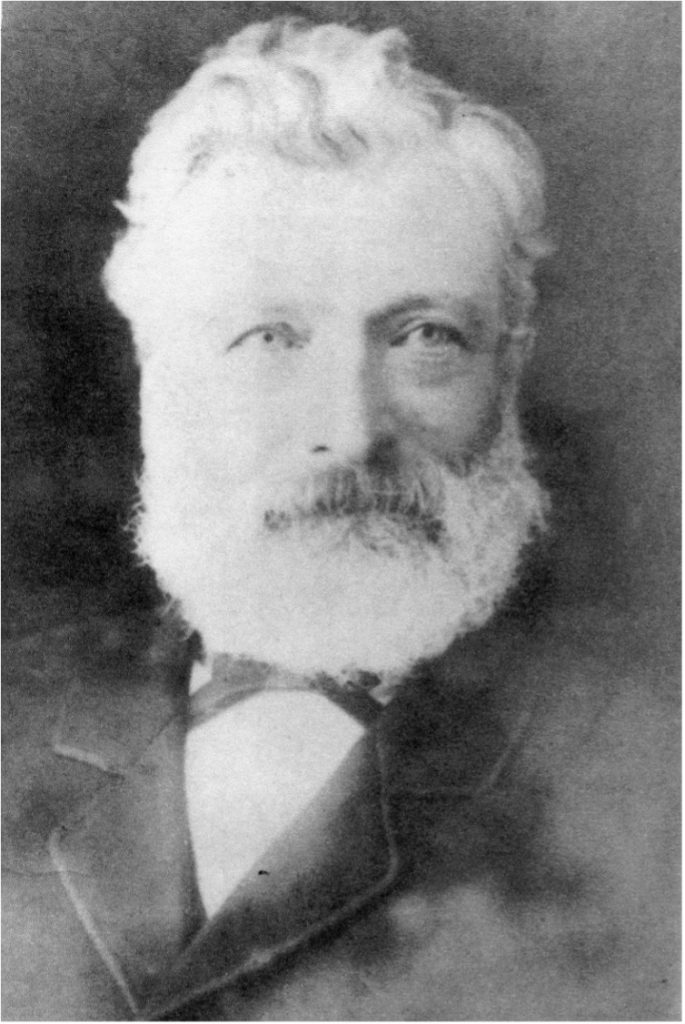
Judge John Rogan – courtesy Helensville Museum
In late 1858 John Rogan began purchasing land on behalf of the Crown. He purchased in the Kaukapakapa area first, followed by the Ararimu Block, the Kaikai Block (between Kaukapakapa West and Te Awaroa, Helensville) and the large Pukeatua Block.
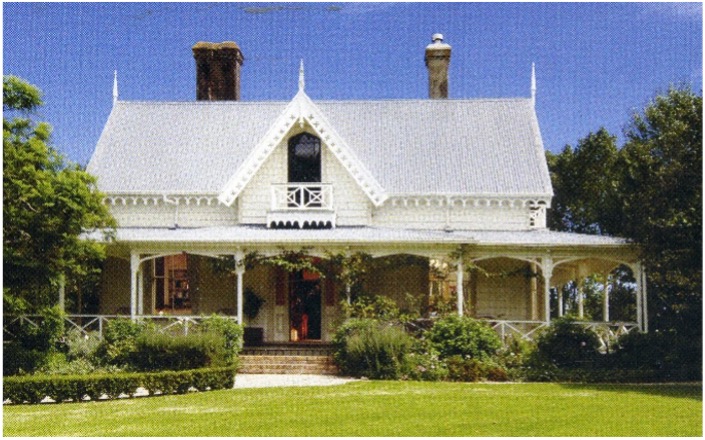
Te Makiri – courtesy Helensville Museum
By 1864, seven large land blocks between Waikoukou and Kaukapakapa had been purchased and Rogan had become the Resident Magistrate for the Kaipara area. In 1865 he was confirmed as Judge of the Native Land Court and heard the first cases in a “Whare Courthouse” at Te Awaroa, Helensville and later in the kauri building that is now part of the Te Awaroa, Helensville Museum.
Judge Rogan had a difficult task maintaining order in Kaipara. One of the greatest thorns in his Magisterial side was a Mr Stephenson who was selling alcohol in a shanty immediately behind the Courthouse reserve in 1864. He had no license to sell spirits and Rogan knew of Stephenson’s activities. Judge Rogan could not secure a case against him as no one would testify. Finally, the people of Te Taou, many of whom were in the employ of the Native Land Court Judge, refused to sell land to Stephenson and he was evicted for illegal occupation of Māori land. Judge Rogan relied on the small Auckland police force for law and order but far more on the influence of local Rangatira (chiefs).
Judge Rogan was boarding with a settler and Te Keene and other Kaipara rangatira saw the wisdom of establishing a residence at Te Makiri where he could be handy to both Auckland and the Kaipara. Within a year, after much correspondence with the Native Secretary, Judge Rogan was able to build his home on Te Makiri, a home which still exists today.
As Judge of the Native Land Court, Rogan was frequently directed by Chief Judge F D Fenton, to attend sittings in other districts and in that capacity wisely handled cases as far from Kaipara as Wairarapa, Taranaki, Poverty Bay and the Chatham Islands. Even within the Kaipara he made many difficult and arduous voyages for his work.
John Rogan ended his long association with Te Awaroa (Helensville) and the Kaipara in 1875 after suffering illness. He left “Te Makiri” for Mt. Albert. He retired at 60 and married Lucy Reynolds, still in her 20s. Lucy died, aged 36, in 1897. Within 18 months Rogan’s oldest son, John, and his daughter, Annie, had also passed away.
Judge John Rogan died aged 77 in 1899, leaving a family of three daughters and one son
